
A fine weekend forecast we headed back to the heartland of Ireland – literally – for a series of lakeshore walks and a visit to some historic and sacred islands by boat.
Lecarrow in Roscommon, on the midwestern shore of Lough Ree, is the nearest village to the geographical centre of the country and that was where we began and ended our trip.
First up a long anticipated exploration of St John’s Wood, one of the finest, biggest, most intact, oldest and species rich ancient native woodlands in the country. Although it has been used as a timber source for hundreds of years and no really mature trees exist it has survived as continuous tree cover and is now protected.

We parked up for the night in the blue dot car park and dived in to a sea of green on a damp evening, immediately enveloped in an otherworldly tree presence.
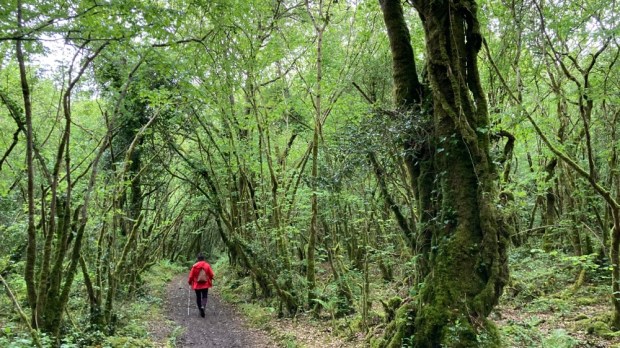



Mostly in State ownership and managed by the NPWS the wood is part of a Special Area of Conservation with rich and varied biological diversity. The main tree canopy is made up of fine big oaks and ash ( not so fine), wild cherry, wych elm, with an understory of hazel, holly, willow, crab apple, white beam and yew. The rich variety of forest floor flora testifies to a long history of uninterrupted woodland cover with species such as the rare Toothworth and Birds Nest orchid.

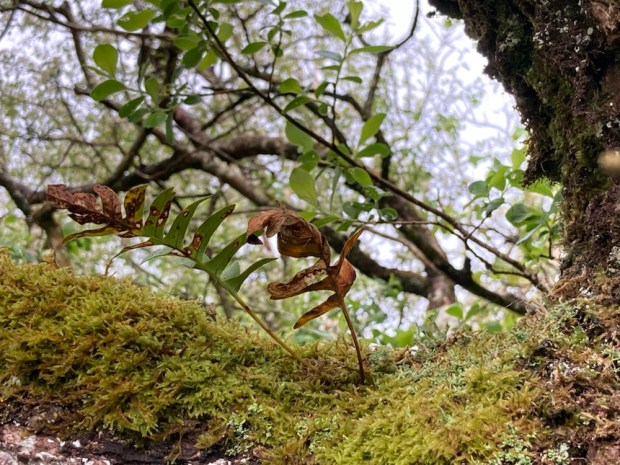

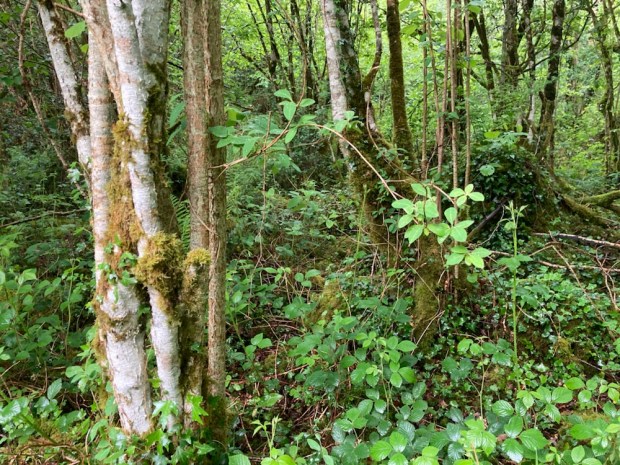
A stone wall bisects the wood and runs down to the lake where the shallow soil is washed away to reveal the limestone bedrock to which the trees cling. In a patch of deeper earth badgers have made themselves at home.
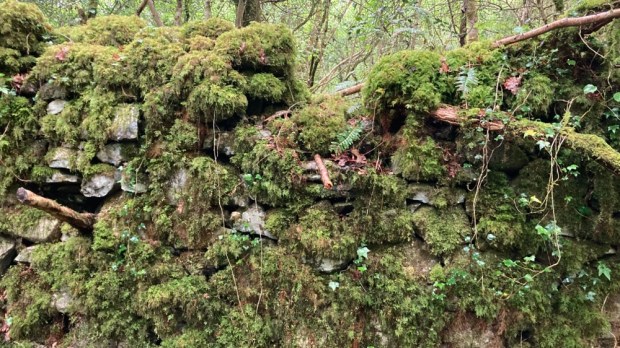

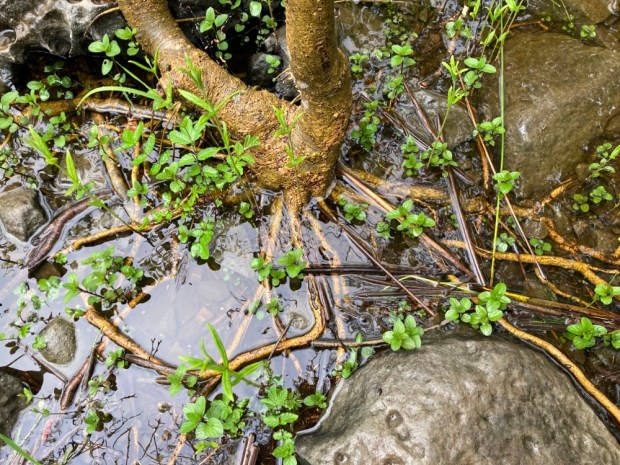

On the western side of the wall the wood is left to do its thing whilst on the eastern side it is managed for conservation which has involved some “coppice with standards” plots for a few years in succession as well as some limited grazing by ponies, bat and bird boxes, maintenance of nature trails including the cutting back of trees alongside to encourage herbaceous flowers and an educational program and scientific monitoring.


The Irish Native Woodland Trust, which does great work and deserves support, owns a small bit of the wood and has recently obtained more land nearby where it is planning to establish a native tree nursery using seed collected in St Johns Wood and to plant an additional 15,000 trees. This project has been part funded by Ryanair through their customers carbon offset donations.
The following morning we drove north through rich and fertile farmland, admiring the size and spread of the many mature hardwoods, and shocked yet again by the massive loss Ash dieback will cause.

We were on route to the Cloonlarge Loop, a lovely peatland walk put together by the proud citizens of the tiny village of Kilteevan, just east of Roscommon. With some development assistance and support from the NPWS and Dept of Culture, Heritage and the Gaeltacht a 7km trail had been put together that meanders quiet back roads through the bog and woodland and features a host of creative and educational features. Fair play to them.


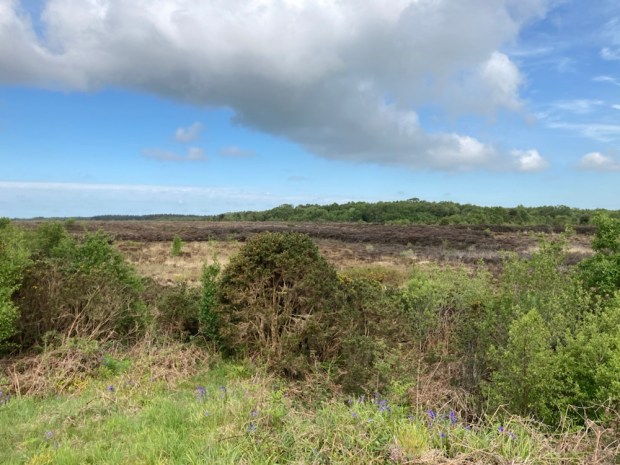

The way was dotted with a wealth of info boards explaining the importance of the peatland habitat and the regeneration efforts going on post extraction and displaying the various species of flora and fauna to be found on the loop. There was also rock art of the local national school, quirky woodcarvings and places to sit and be still.

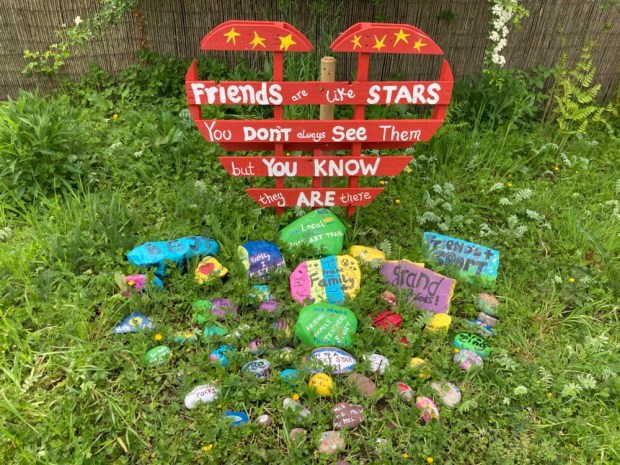



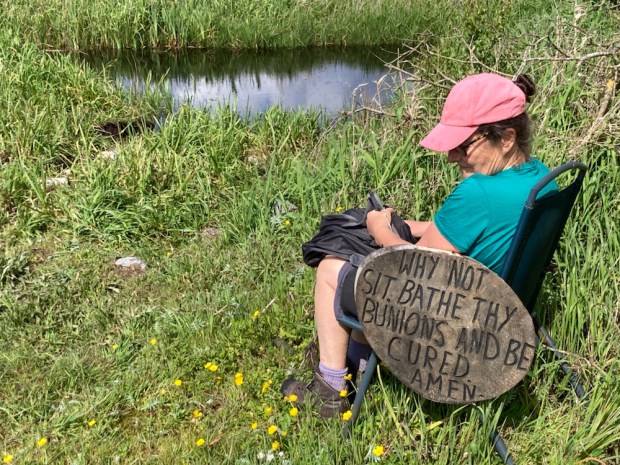

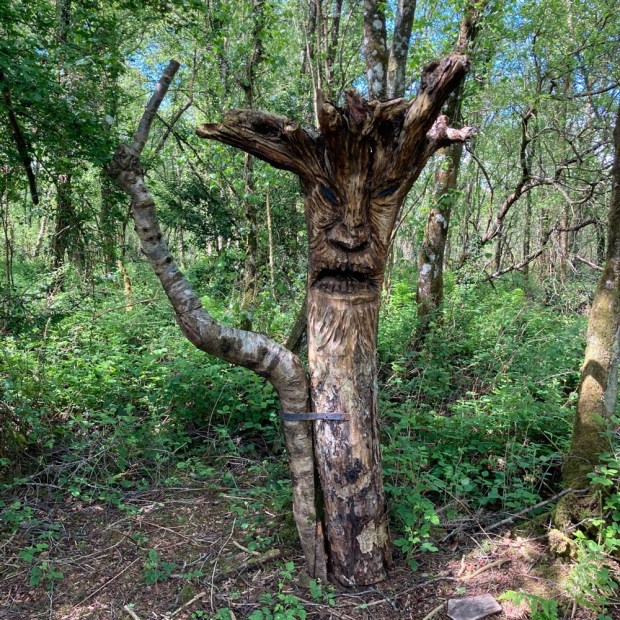
The flowers were buzzing with pollinators and butterflies flapped past through the warm and sultry air. It felt like a timeless summer day as we wandered the lanes and callows to the lakeside, and agreed with the words of botanist and geologist John Feehan.
“Bogs are places of enchantment. …You feel drawn to them as though they awakened an echo deep within us of the open savannah landscapes in which our human kind had its origins……”



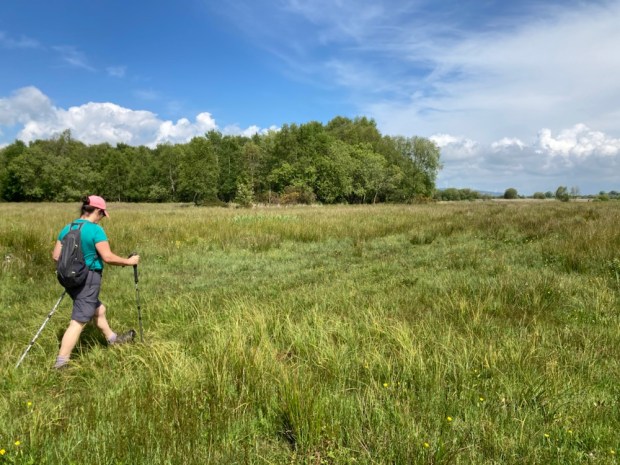
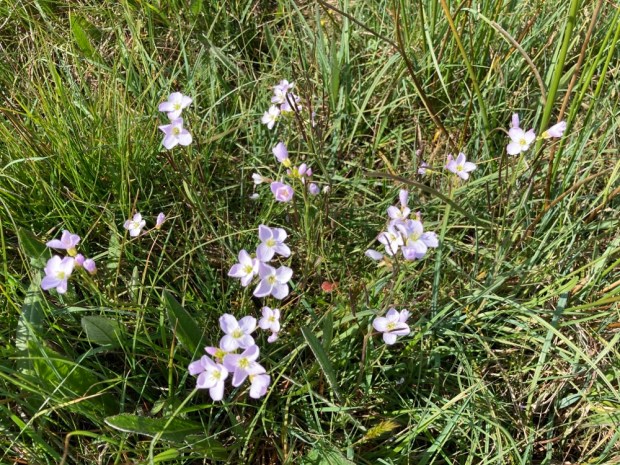
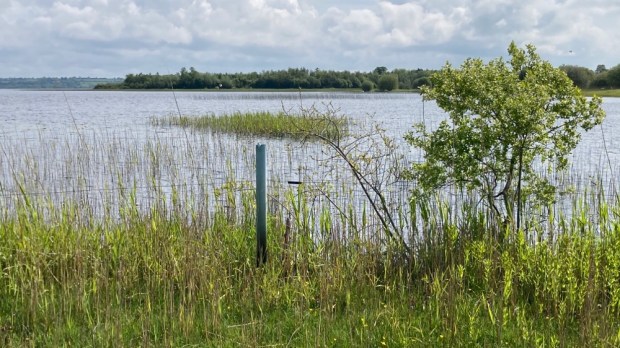


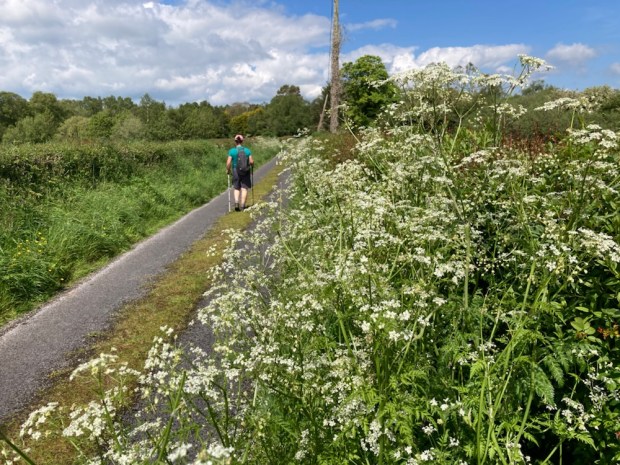
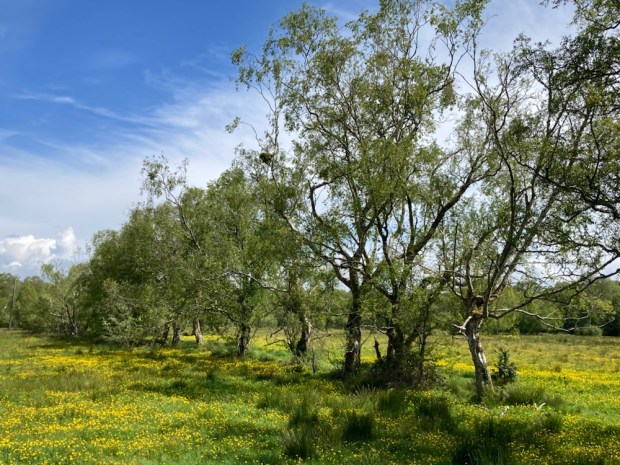
There were some photos and illustrations of past activities on the bog including the discovery in 1969 of a Bronze Age wheel while cutting turf. A locally made vintage hopper was on display with a message to Stay Safe laid out in turf sods.




The peatland had certainly played a huge part in the daily and historical lives here and the ending of turf cutting and closure of the Bord na Mona operations across the midlands involves a massive cultural shift. It seemed that the people behind the Cloonlarge Loop could celebrate their past close connection to the bog as a fuel and employment resource and embrace the current understanding of its vital natural qualities and need for protection. There is a 30-100year long term plan here to restore 70 hectares of degraded raised bog to an active state and help to capture carbon.
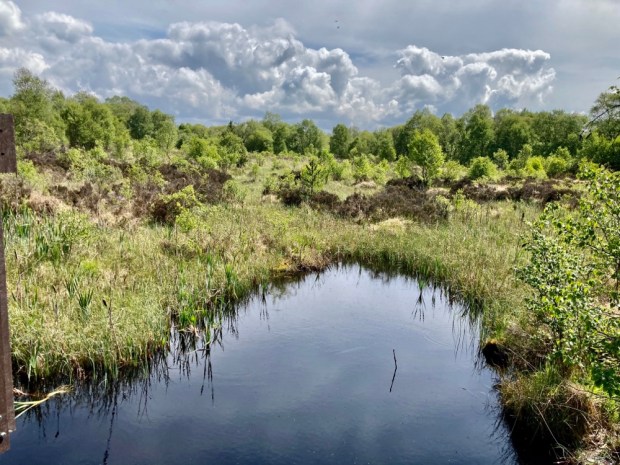
The future generations were being involved and stimulated in their natural heritage by the inclusion on the walk of fairy trails and bat and bird boxes, insect hotels and even a little library of nature and colouring books and a story telling chair. Top marks to the trail. 
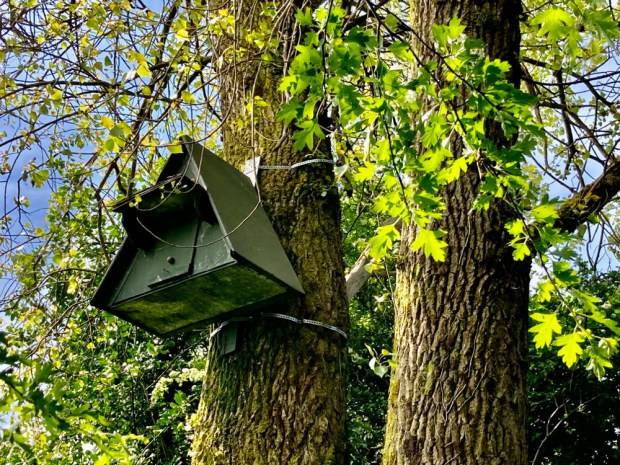


Next stop Strokestown House where an exhibition, “Memento Mori”, by Paula Stokes in the 6 acre walled garden commemorates the 1845 famine. The huge Palladian mansion which houses the National Famine Museum has been closed for some time but the Irish Famine Summer School international conference was being held on zoom while we were there and the exhibition opening was timed to coordinate with that. A work consisting of 1845 hand blown glass potatoes in the form of a cairn represents a burial monument to the million people who died.
 The exhibit was housed in the Gazebo tower above the pineapple pit where the landlord classes could gaze at all they had dominion over, untouched by the horrors of famine.
The exhibit was housed in the Gazebo tower above the pineapple pit where the landlord classes could gaze at all they had dominion over, untouched by the horrors of famine.

 Unfortunately the gardens, in the care of the Irish Heritage Trust, are in a sorry and neglected state. Although impressive in size and laid out well the amount of volunteer workers they have cannot keep up with the work necessary and it’s all getting out of hand. But on a pleasant sunny day, with flowers in bloom, it was easy enough to ignore all the weeds and hope for future fulfilling of potential.
Unfortunately the gardens, in the care of the Irish Heritage Trust, are in a sorry and neglected state. Although impressive in size and laid out well the amount of volunteer workers they have cannot keep up with the work necessary and it’s all getting out of hand. But on a pleasant sunny day, with flowers in bloom, it was easy enough to ignore all the weeds and hope for future fulfilling of potential.



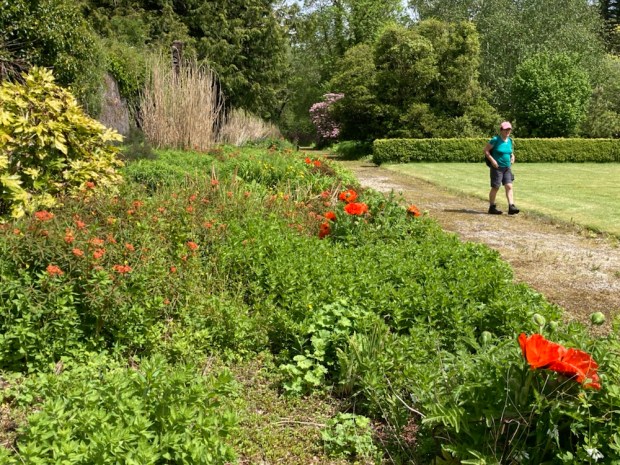


The museum is having a massive makeover due to open next year and a newly initiated National Famine Way walking route goes from here to the Royal canal and down to Dublin port where the coffin ships awaited those desperately seeking a new life abroad. I hope that an influx of tourist euros will enable the place to slough off its air of forsaken neglect.
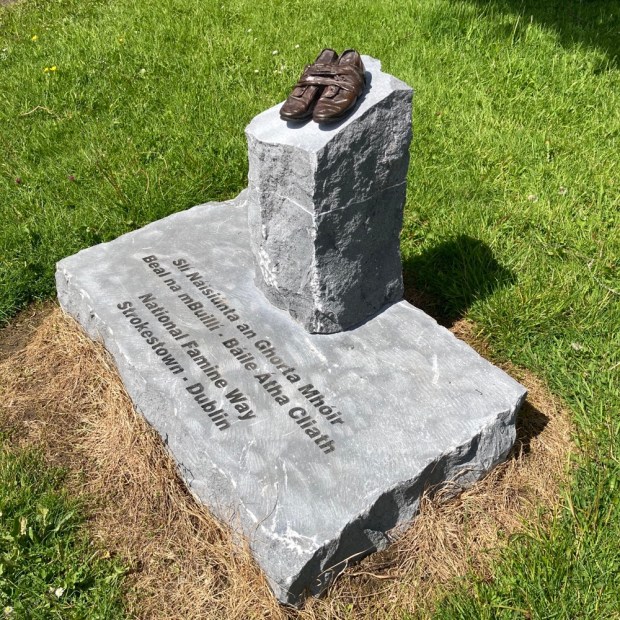
Another looped walk on the shores of Lough Ree awaited at Lanesborough where the looming presence of the ESB turf power station, the last to close in December 2020, signified another seismic shift in the fortunes of the midlands. Ironically many of the Bord na Mona workers made redundant by the ending of turf harvesting are now employed in the peatland restoration programmes. An €11 million ” Just Transition” fund from government and the ESB is set to help Midlands projects that contribute to a move away from carbon intensive activities towards a more sustainable, climate resilient economy.
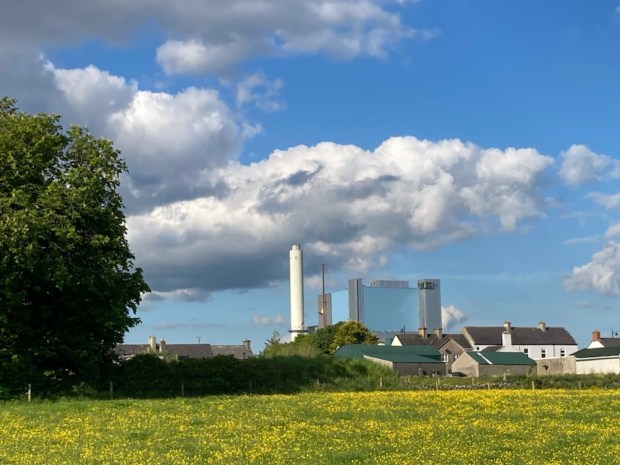
Parking up beside the lake I was tempted by the sunshine to go for a dip but the scum of millions of mayfly put me off and I contented myself with watching others for awhile before we set off on the woodland loop.
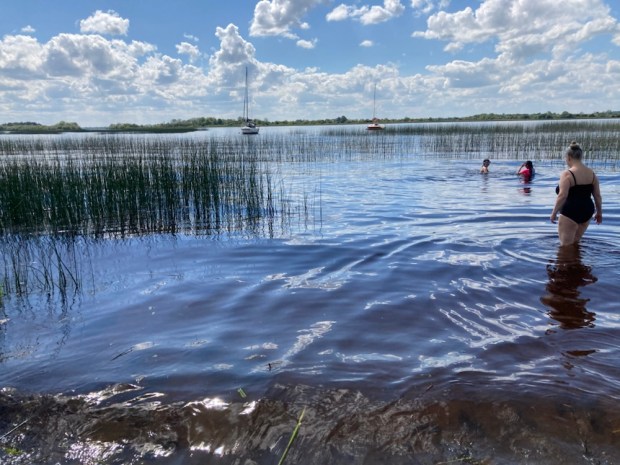
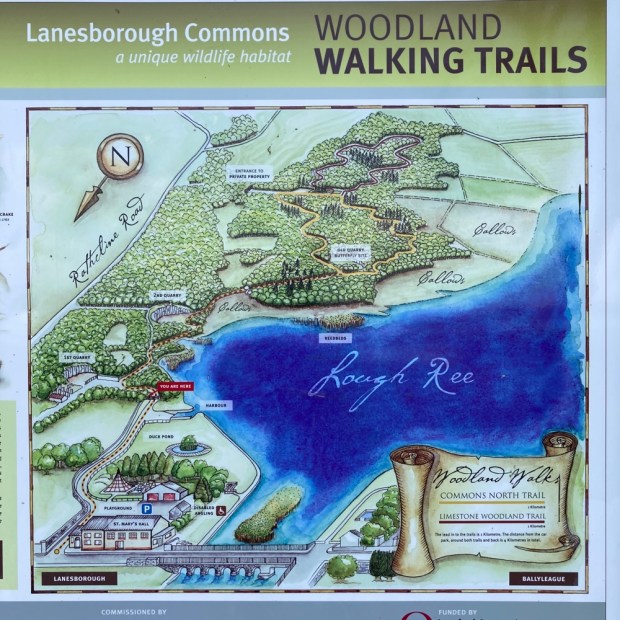
The 4km track led us through two old limestone quarries and a variety of woodland types past callows and reedbeds. Very pleasant in the dappled shade and well appreciated by the Lanesborough people.


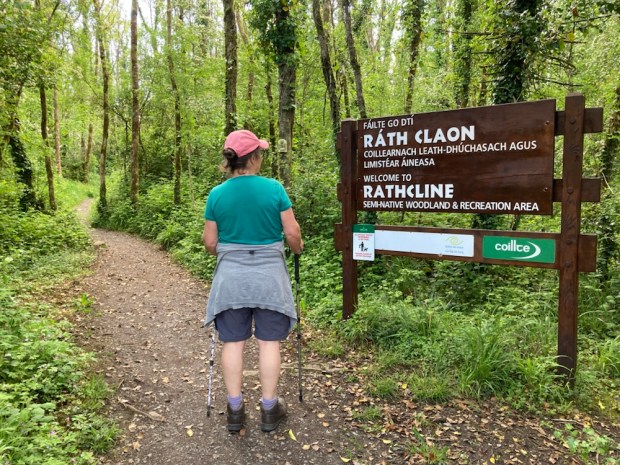

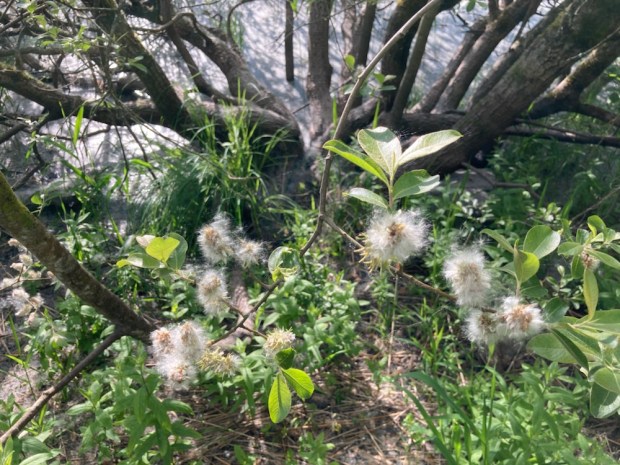

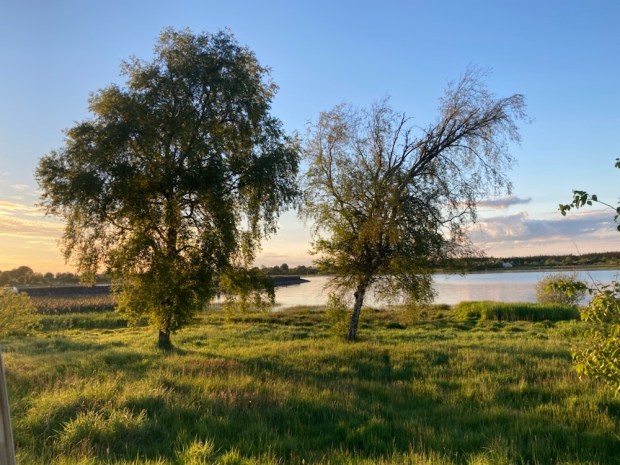
Back in Lecarrow in the early morning we cast off in our hired punt and motored slowly down the canal linking the sheltered harbour to the lake at Blackbrink Bay a couple of km away. Opened in 1794 it was busy with boats carrying limestone, corn and flax ( grown on the canal banks and a popular midlands crop) out to the Shannon transport network. The railways bought about a steep decline and by the 1960’s the canal was choked and unnavigable. The start of pleasure boating instigated a dredging scheme and the canal was reopened in 1967.
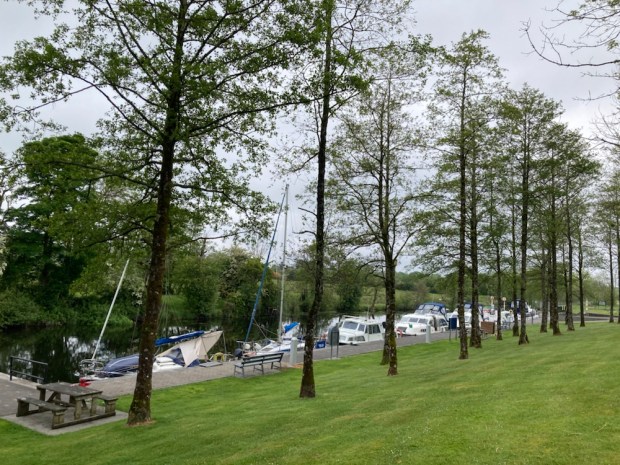
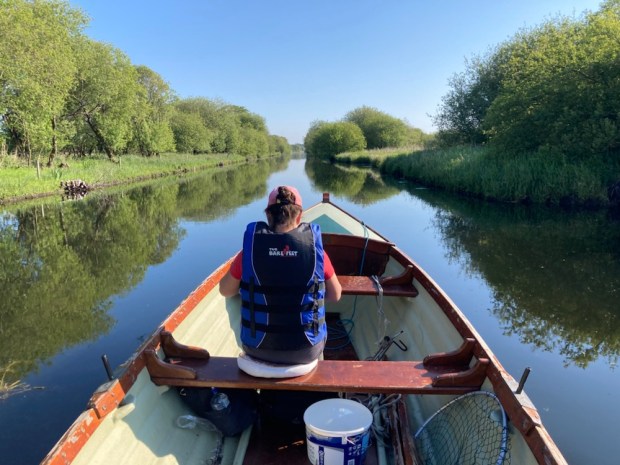
Once out on the lake we slid across the flat calm waters for about an hour, all along St Johns Wood and then south west around Inchturk to Inchmore, the largest island on Lough Ree at 132 acres. Several families lived here until quite recently with the schoolhouse only built in 1927. We moored at a small quay at the end of a muddy lane leading to the houses and the old fishing lodge of the Marquis of Westmeath.

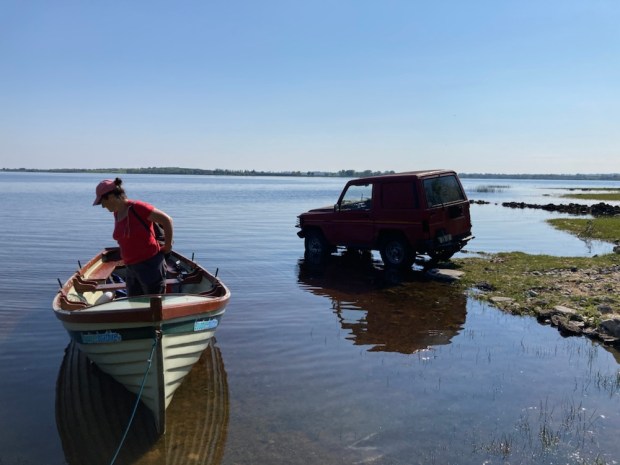


I have discovered that one of the intact houses has just gone up for sale as the owner is moving to New Zealand. You heard it here first.. €130,000 ( very open to offers) will get you a 2 up 2 down with 70’s extension on an acre. Off grid living. Compost loo. Cooking on the fire ( or less poetically -gas). Rain or lake water. And loads of Peace and Tranquility. Priceless.

Check out Island House, Inchmore on YouTube for drone footage or island house.site. Your new life awaits.

Further up the beautiful tree lined track we entered a wide field on the southern end of the island. Here was the remnants of much older habitation, a substantial ring fort. Hard to photograph effectively at shadowless midday the site had a timeless vibe to it sunk as it was in prehistory.
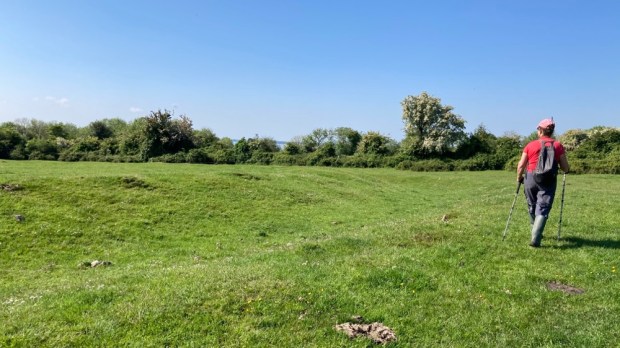
More recent relics were the lodge and scattered machinery nearby but we were unable to locate the remains of the early Christian monastery founded by St Lioban.
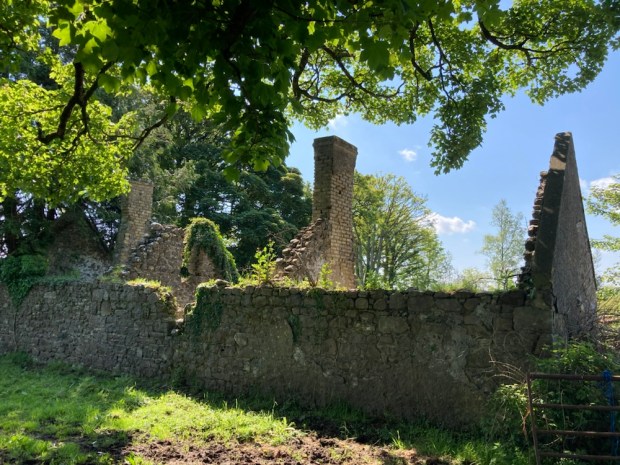
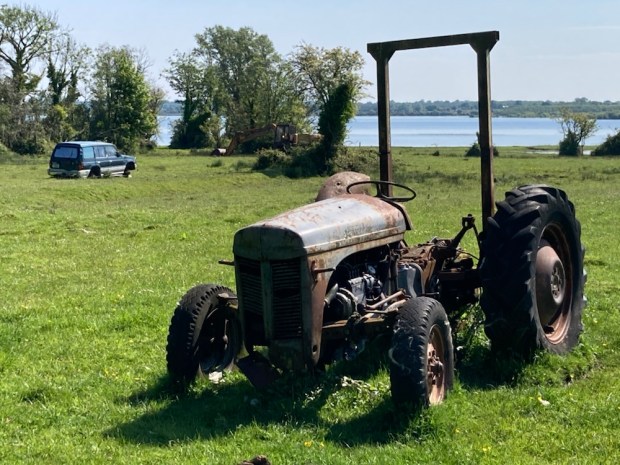
Back off in the boat we motored west past the tiny Nuns Island , site of another monastic settlement and nunnery and in 2014 the discovery of a cache of rifles, ammo and Semtex. It seems the island may have been used for IRA training in the past, somewhat of a tradition as other islands here were known as hideouts during the War of Independence.

We landed at Safe Harbour on the Rindoon peninsular- the scene of countless conflicts for over 1000 years. The vikings were here in the 9th century before Brian Boru saw them off in the 10th but the impressive remains there now are from the Anglo-Norman days when throughout the 13th century this was a very impressive medieval town of perhaps 1000 people. Abandoned after the Gaelic Resurgence of the early 14th century repeatedly attacked and looted the settlement, it remained left forgotten and overgrown for 650 years. Nowadays recognised as unique in Ireland and Britain the peninsular is rich in visible history with its rare windmill, castle, church, town walls, bee boles and a hospital. We spent a sunny afternoon on the looped trail.








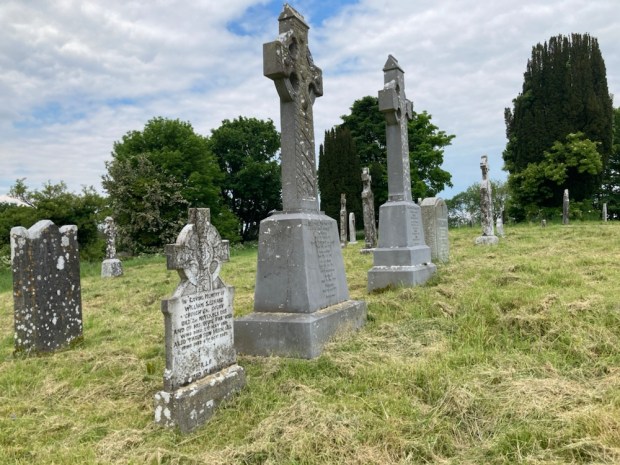

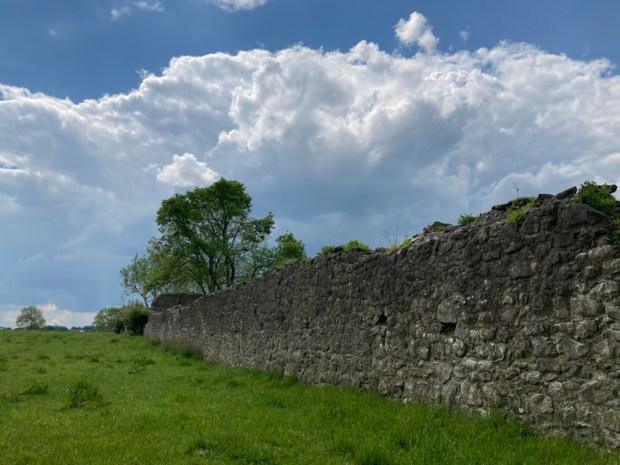
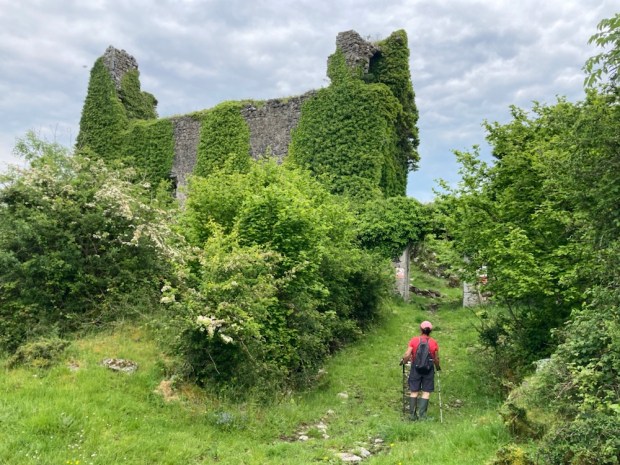
One more stop to make on our scenic cruise of the lake we ventured north of Blackbrink Bay to land on Inchcleraun, another sacred spot with seven medieval churches and yet another monastery , this one founded in 560 by St Diarmaid the Just. We chatted to the farmer who comes to mind his cattle every day and left his dogs guarding the boats while we set off through the lush meadows to explore.
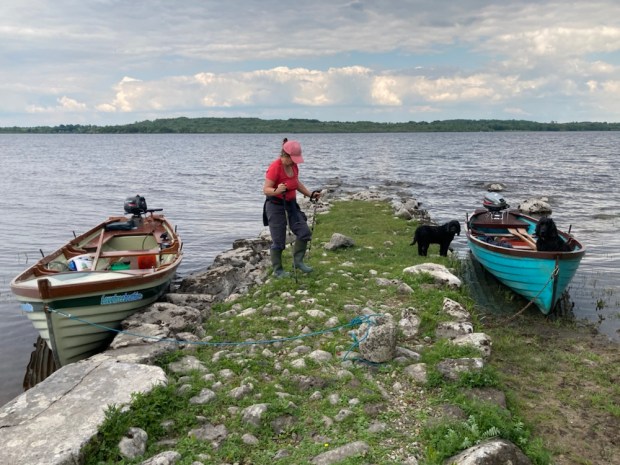

The monastic settlement lasted about 800 years before finally giving up the ghost after repeated raids by the Munstermen. The peaceful air and tranquility of the island belie the turbulent history of being frequently plundered and burnt by invaders.



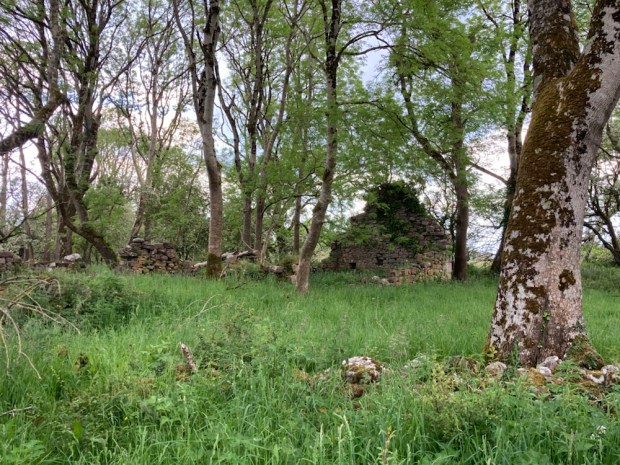
From the cluster of churches, St Diarmuids, Teampall Mor- Great Church, Women’s Church, St Marys and Church of the Dead, we walked to the top of the island to find the medieval belfry church, Teampall Clogas with its unusual square bell tower.



Near here is the Sunny Place of Maeve, where the famous Queen of Connaught met her end at the hands of Furbraith, the son of her sister whom she had murdered whilst pregnant. The baby survived and grew up plotting revenge. Knowing Maeve liked to bath from the island he practised firing the distance from the mainland with his slingshot. However on the fateful day he spotted her at the Sunny Place he had no stones to hand, so used what he had to hand, a hard cheese for his lunch. His practise payed off and she dropped dead- ending the turbulent reign of the Warrior Queen.

And so ended our more peaceful visit to the islands of Lough Ree with their traces of otherworldly existence slowly smothered by nature and to the woodlands and bogs of the shore hopefully now protected and able to continue in their timeless cycles.
